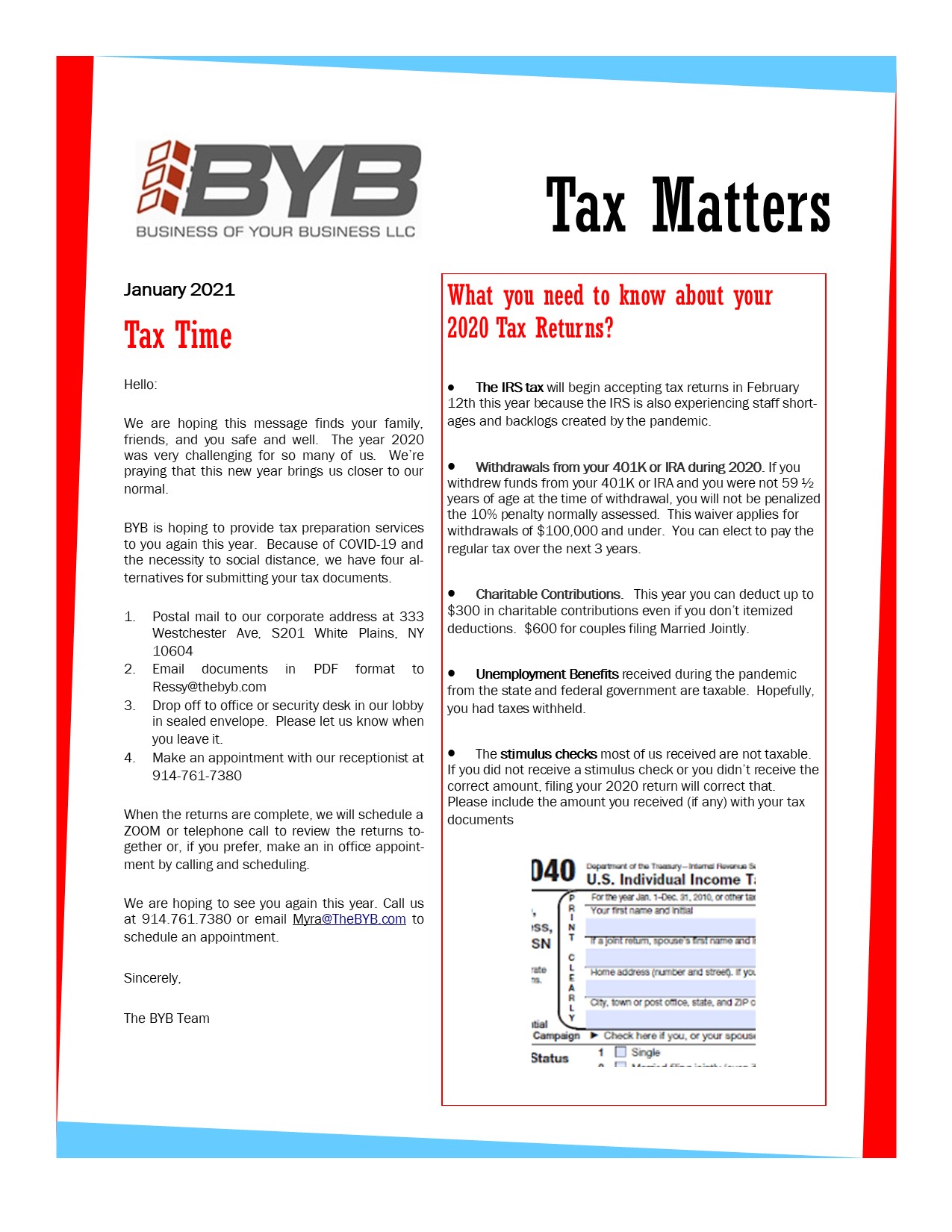Click Here to read the full Tax Matters newsletter for the 2020 Tax Season

The IRS will start accepting personal income tax returns on Monday, January 27th.
The deadline to file your 2019 tax return and pay any tax owed is Wednesday, April 15th.
The IRS continues to encourage taxpayers to file their returns electronically and choose direct deposit for faster receipt of refunds.

The beginning of a new year is a great time for employees to review their withholding and determine if any adjustments are necessary.
The IRS has released the 2020 Form W4 which has been redesigned to reduce complexity and increase the accurateness of the withholding system.
The 2020 W4 form should be used by new hires and any employees making withholding changes in 2020.

The IRS has announced the contribution limit for employees who participate in a 401K, 403B and most 457 plans will increase to $19,500 for the tax year 2020 (up from $19,000 in 2019).
The catch-up contribution limit for employees aged 50 and over who participate in these plans will increase to $6,500 (up from $6,000 in 2019).
This online tool by the IRS allows taxpayers to check the status of their refund anytime.
Taxpayers can start checking on the status of their return within 24 hours after the IRS received their e-filed return, or four weeks after they mail a paper return.
 Beginning on Jan. 1, 2019, the standard mileage rates for the use of a car (also vans, pickups or panel trucks) will be:
Beginning on Jan. 1, 2019, the standard mileage rates for the use of a car (also vans, pickups or panel trucks) will be:
It is important to note that under the Tax Cuts and Jobs Act, taxpayers cannot claim a miscellaneous itemized deduction for unreimbursed employee travel expenses. Taxpayers also cannot claim a deduction for moving expenses, except members of the Armed Forces on active duty moving under orders to a permanent change of station.
For more details see Notice-2019-02.
 As of January 1, 2019, the maximum wage base that is subject to the Social Security payroll tax will increase from $128,400 to $132,900.
As of January 1, 2019, the maximum wage base that is subject to the Social Security payroll tax will increase from $128,400 to $132,900.
There is no limit on earnings subjected to the Medicare payroll tax.
![]()
President Trump recently signed the tax reform bill into law which resulted into major changes to the code for both individuals and corporations. Here is a brief summary of the changes that will affect most of you.
| Filing Status | Old Law | New Law |
| Single | $6,500 | 12,000 |
| MFJ | 13,000 | 24,000 |
| MFS | 6,500 | 12,000 |
| HOH | 9,350 | 18,000 |
| Single | MFJ | HOH | MFS | |
| 0% up to: | $38,600 | $77,200 | $51,700 | $38,600 |
| 15% up to: | 425,000 | 479,000 | 452,400 | 239,500 |
| 20% over | 425,000 | 479,000 | 452,400 | 239,500 |
| Tax Status | Old Law | New Law |
| MFJ | $110,000 | $400,000 |
| Individuals | $75,000 | $200,000 |
| From | To | Rate |
| $0 | $50,000 | 15% |
| 50,000 | 75,000 | 25% |
| 75,000 | 100,000 | 34% |
| 100,000 | 335,000 | 39% |
If you are moving due to Job relocation, you can deduct moving expenses.
In order to deduct moving expenses, your move must meet three requirements:
After meeting these requirements, the #IRS has plenty of tips to show you what expenses are deductible.
For more information click here. Be sure to update your address with the IRS and Post Office.
Several different things can alert the IRS to issue an audit. Keeping your books and records in order can help to avoid a stressful situation. Making large charitable contributions and failing to report all of your income can trigger an audit.
If you have multiple sources of income it can become hard to keep track of all the income year earned, and the more likely you are to leave out a payment. To avoid missing a 1099 keep track of all work you complete and the agreed payment. Not getting a form is not an excuse for not reporting the income.
Read more by clicking link below:
© 2025 Business of Your Business
Theme by Anders Noren — Up ↑